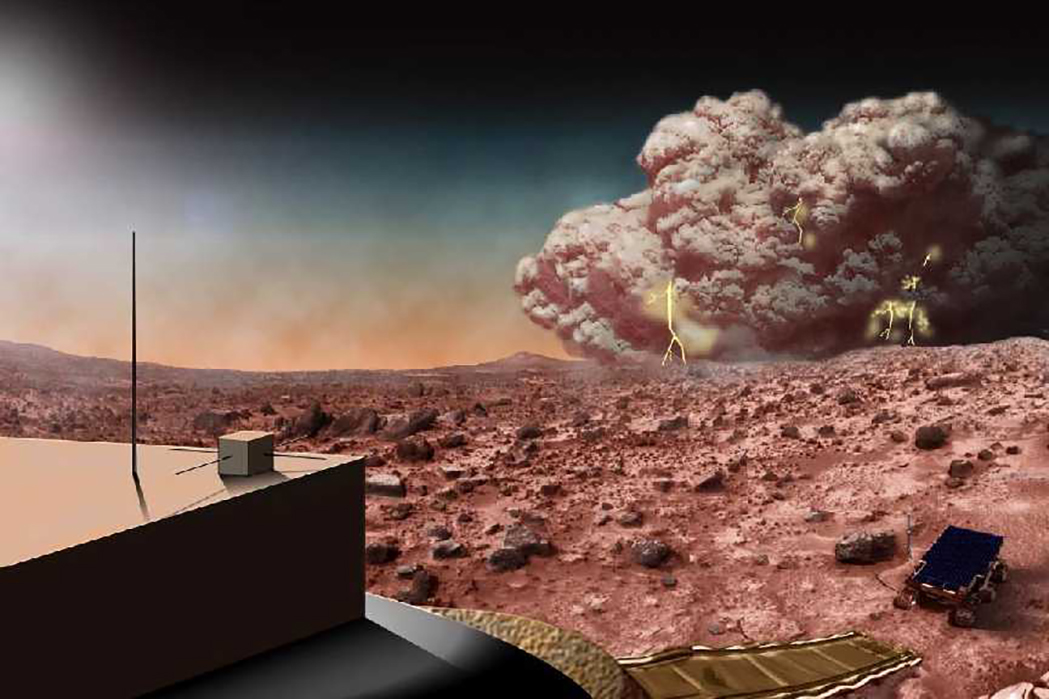For years, science fiction writers from Edgar Rice Burroughs to C. S. Lewis have imagined what it would be like for humans to walk on Mars. As mankind comes closer to taking its first steps on the Red Planet, authors’ depictions of the experience have become more realistic. Andy Weir’s “The Martian” begins with a massive dust storm that strands fictional astronaut Mark Watney on Mars. In the scene, powerful wind rips an antenna out of a piece of equipment and destroys parts of the astronauts’ camp. Mars is infamous for intense dust storms, which sometimes kick up enough dust to be seen by telescopes on Earth. “Every year there are some moderately big dust storms that pop up on Mars and they cover continent-sized areas and last for weeks at a time,” said Michael Smith, a planetary scientist at NASA’s Goddard Space Flight Center in Greenbelt, Maryland.
Beyond Mars’ large annual storms are massive storms that occur more rarely but are much larger and more intense. “Once every three Mars years (about 5 ½ Earth years), on average, normal storms grow into planet-encircling dust storms, and we usually call those ‘global dust storms’ to distinguish them,” Smith said. It is unlikely that even these dust storms could strand an astronaut on Mars, however. Even the wind in the largest dust storms likely could not tip or rip apart major mechanical equipment. The winds in the strongest Martian storms top out at about 60 miles per hour, less than half the speed of some hurricane-force winds on Earth.
Focusing on wind speed may be a little misleading, as well. The atmosphere on Mars is about 1 percent as dense as Earth’s atmosphere. That means to fly a kite on Mars, the wind would need to blow much faster than on Earth to get the kite in the air. “The key difference between Earth and Mars is that Mars’ atmospheric pressure is a lot less,” said William Farrell, a plasma physicist who studies atmospheric breakdown in Mars dust storms at Goddard. “So things get blown, but it’s not with the same intensity.”
Challenges of Solar Power:
Mars’ dust storms aren’t totally innocuous, however. Individual dust particles on Mars are very small and slightly electrostatic, so they stick to the surfaces they contact like Styrofoam packing peanuts. “If you’ve seen pictures of Curiosity after driving, it’s just filthy,” Smith said. “The dust coats everything and it’s gritty; it gets into mechanical things that move, like gears.” The possibility of dust settling on and in machinery is a challenge for engineers designing equipment for Mars. This dust is an especially big problem for solar panels. Even dust devils of only a few feet across — which are much smaller than traditional storms — can move enough dust to cover the equipment and decrease the amount of sunlight hitting the panels. Less sunlight means less energy created. In “The Martian,” Watney spends part of every day sweeping dust off his solar panels to ensure maximum efficiency, which could represent a real challenge faced by future astronauts on Mars. Global storms can also present a secondary issue, throwing enough dust into the atmosphere to reduce sunlight reaching the surface of Mars. When faced with a larger dust storm in the book, Watney’s first hint is the decreased efficiency of his solar panels, caused by a slight darkening of the atmosphere. That’s a pretty accurate depiction of what large dust storms can do, Smith said. “We really worry about power with the rovers; it’s a big deal,” Smith said. “The Spirit and Opportunity rovers landed in 2004, so they’ve only had one global dust storm to go through (in 2007) and they basically shut down operations and went into survival mode for a few weeks.”
